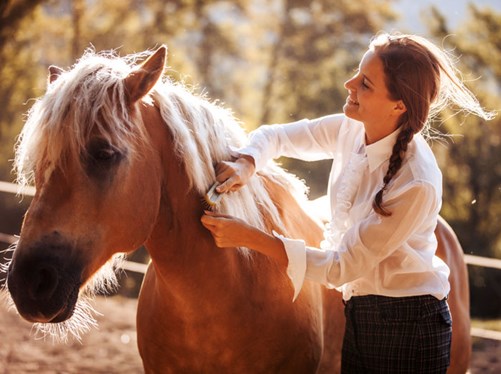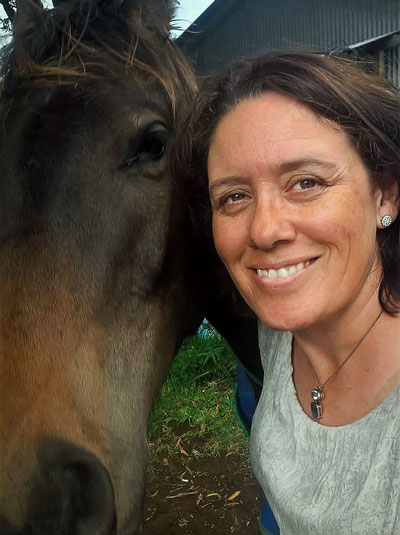Robertson provides both equine counselling and corporate team building through her Taranaki-based business Hōiho Whakaora Tāngata. She works with three horses: a small pony, another larger one and a bigger, heavier animal she says is a gentle giant.
Since they are powerful beasts, horses can be daunting for those not used to handling them. But sometimes that sense of fear can be a helpful part of the therapy. “Obviously I’m not going to put clients in a situation that’s dangerous, but we can work with what the fear is about,” says Robertson.
Generally, an initial therapy session will involve a client spending 10 to 15 minutes introducing themselves to the animals. “The horses are in an arena and free to move as they like – they’re not wearing halters or tied up. If a client has a particular issue in mind, I ask them to take it in with them.”
Sessions tend to vary. A client might simply be with the horses, they might brush one or be asked to navigate an obstacle course with them. Some connect with a particular horse. Others worry the animals don’t like them. “Horses have complex herd dynamics and a sensitivity to body language. They give immediate feedback.”
In the course of working with a range of issues – anything from grief or anger to a history of abuse – Robertson has seen how the horses will do different things with different people. Often she is the observer and it is up to the clients to identify how an animal’s reaction to them could be a metaphor for something going on in their life.
“One woman I worked with had experienced the tragic suicide of her son some years earlier. She spent time with a particular horse and it kept leaning its head into her chest. The horse didn’t normally behave like that. I asked her why she thought it was doing it, but she didn’t know.”
Two days later, the woman called and said the session had helped her realise she had been avoiding her grief and needed to lean into it. “So it was significant to her.”
Robertson has many similar stories about horses exhibiting uncanny intuition. Although she can’t fully explain it, she has found they can help people face and move through issues far faster than they would with one-to-one talk therapy. Clients don’t need to have an affinity for horses or have any experience at all with them, only be willing to give the treatment a chance.
“They often don’t want to talk any more,” says Robertson, who has been working as an equine therapist for the past three years. “Some kids can’t articulate what is going on anyway, and neither can many adults. This is a much simpler and more obvious way to see what is going on.”
Taking therapy out of the office and putting people next to a large animal means they have to be in the now, responding to what is happening. This can quickly expose unhelpful thought and behaviour patterns, or enable clients to get in touch with painful thoughts and feelings they have been struggling with.
“What I’ve found is there is an immediate response in the person,” says Robertson.


